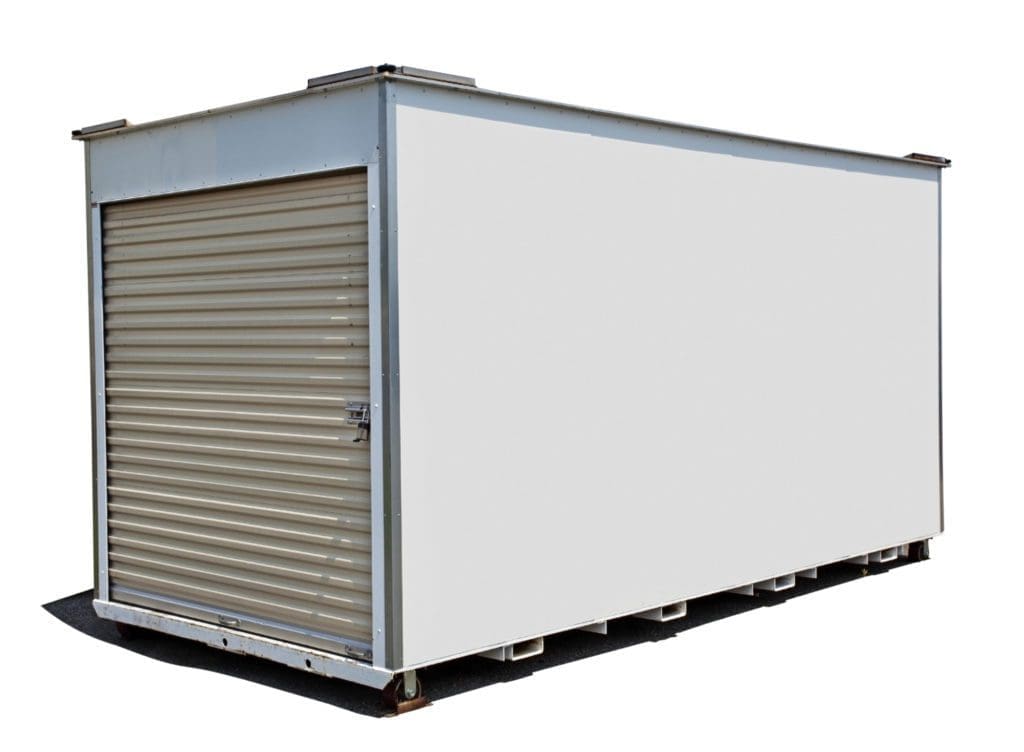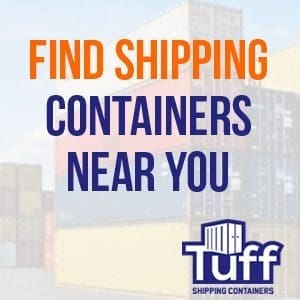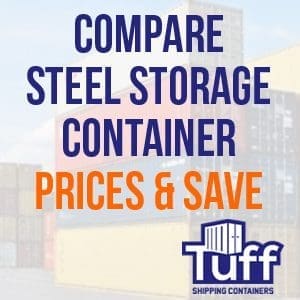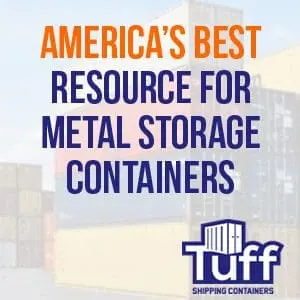
Shipping Container Security: Best Practices to Protect Your Assets
In the world of logistics and storage, shipping containers play a pivotal role. While they are known for their durability and convenience, ensuring the security of the contents they hold is of utmost importance. This blog post delves into the best practices and security measures that can be employed to safeguard assets in shipping containers.
Understanding the Risks
Before diving into the security measures, it’s crucial to understand the risks associated with shipping containers. These risks can range from theft and vandalism to environmental damage. Being aware of these potential threats is the first step in effectively protecting your assets.
To effectively safeguard the contents of shipping containers, it’s essential to have a thorough understanding of the various risks they may encounter. These risks are not just limited to theft or vandalism; they encompass a range of issues that can compromise the integrity and safety of the container’s contents.
Theft and Break-Ins
- Primary Concern: The most obvious and concerning risk associated with shipping containers is theft. Containers, often located in less supervised or remote areas, can become targets for thieves, especially if they are known or suspected to hold valuable items.
- Methods of Theft: Break-ins can occur through forced entry, cutting through the container walls, or tampering with the locking mechanism. In some cases, entire containers can be stolen using appropriate machinery.
Vandalism and Unauthorized Access
- Damage to Property: Apart from theft, containers are also at risk of vandalism. This can range from graffiti and superficial damage to more severe destruction that can compromise the container’s structure and security.
- Unauthorized Access: There’s also the risk of individuals gaining unauthorized access to containers, which can lead to theft, damage to contents, or using the container for illegal activities.
Environmental Risks
- Weather-Related Damage: Shipping containers are typically robust, but they are still vulnerable to extreme weather conditions like heavy rains, storms, floods, or excessive heat, which can damage the container or its contents.
- Corrosion and Wear: Prolonged exposure to harsh environmental conditions can lead to corrosion and wear, weakening the container’s structure and making it more susceptible to breaches.
Internal Risks
- Damage from Within: Risks can also originate from within the container. Improperly packed or secured goods can shift during transport, leading to internal damage. In cases of hazardous materials, this can pose significant safety risks.
Logistical and Operational Risks
- Misplacement or Misrouting: In the complex logistics chain, containers can sometimes be misplaced, misrouted, or delayed, which can disrupt business operations and lead to financial losses.
- Documentation Errors: Inaccurate or incomplete documentation can lead to delays in shipping or customs clearance, potentially resulting in financial penalties or legal issues.

Understanding these risks is crucial for developing effective strategies to mitigate them. Whether it’s ensuring robust physical security to prevent theft and vandalism, taking measures to protect against environmental damage, or ensuring accurate and thorough documentation and logistics planning, comprehending the breadth of potential risks is the first step in securing your shipping container assets effectively. With this knowledge, businesses can implement comprehensive security measures that address each of these vulnerabilities.
Robust Locking Mechanisms
One of the most straightforward yet essential security measures is the use of robust locking mechanisms. High-quality padlocks, crossbar locks, or lock boxes are effective in deterring theft. It’s important to choose locks that are specifically designed for shipping containers and are resistant to bolt cutters, drilling, and other common methods of tampering.
Enhanced Visibility and Monitoring
- Lighting: Well-lit areas can significantly deter theft and vandalism. Installing motion-sensor lights around your shipping container can be an effective measure.
- Surveillance Cameras: The use of CCTV cameras provides a way to monitor your shipping container remotely. Cameras act as both a deterrent and a means to record any suspicious activity.
Alarm Systems
Installing alarm systems is another layer of security that can be added to shipping containers. Modern alarm systems can alert you in real-time in case of any breach, and some are equipped with features like motion detectors and door sensors.
Regular Inspections
Conducting regular inspections of your shipping containers can help in identifying and addressing any security lapses. This includes checking the integrity of the locks, doors, and hinges, as well as ensuring that the container is in good condition to withstand environmental elements.
Early Detection of Security Breaches
- Identifying Weaknesses: Regular inspections help in early detection of any potential security breaches, such as tampering with locks or signs of attempted break-ins. By identifying these issues early, corrective actions can be taken before any significant loss or damage occurs.
- Monitoring Wear and Tear: Inspections are also essential for monitoring the wear and tear of containers. Over time, containers may develop vulnerabilities like rust or structural weaknesses that can make them more susceptible to breaches. Regular checks ensure that these issues are identified and addressed promptly.


Ensuring Locks and Seals are Intact
- Verifying Lock Integrity: An important aspect of container inspections is checking the integrity of locks and seals. This includes ensuring that locks are functioning correctly, haven’t been tampered with, and that seals are intact and unbroken.
- Upgrading Security Features: Regular inspections can also identify opportunities to upgrade security features, like installing more robust locks, anti-tamper seals, or lock boxes for added protection.
Compliance with Safety Standards
- Regulatory Compliance: For containers transporting hazardous materials or operating in regulated industries, regular inspections are crucial for compliance with safety and regulatory standards. These inspections ensure that containers meet industry-specific safety requirements.
- Documentation Verification: Inspections also involve verifying that all necessary documentation is accurate and up-to-date. This is particularly important for containers that are shipped internationally, as improper documentation can lead to delays and security risks.
Enhancing Overall Security Posture
- Deterrent to Potential Intruders: The knowledge that containers are regularly inspected can act as a deterrent to potential intruders. Regularly inspected containers are less likely to be targeted as they are perceived to be more secure.
- Developing a Security Culture: Regular inspections help in fostering a culture of security within the organization. They demonstrate a commitment to maintaining high security standards, which can encourage employees to be more vigilant and proactive in reporting any security concerns.
Implementing Effective Inspection Protocols
- Scheduled Inspections: Establish a regular schedule for inspections, ensuring that they are frequent enough to provide effective monitoring without causing undue disruption.
- Trained Personnel: Ensure that inspections are carried out by trained personnel who know what signs of damage or tampering to look for.
- Record Keeping: Maintain detailed records of each inspection, including any findings and actions taken. This documentation can be vital for insurance purposes, compliance, and in case of any security incidents.
Regular inspections are a critical aspect of maintaining the security of shipping containers. They enable early detection of potential security issues, ensure compliance with safety standards, and enhance the overall security posture. By implementing a robust inspection protocol and fostering a culture of security, businesses can significantly mitigate the risks associated with shipping container security.


Strategic Placement
The placement of your shipping container can impact its security. Placing it in a visible, trafficked area can reduce the risk of theft. Additionally, positioning the container’s door against a wall or another container can prevent unauthorized access.
Use of Cargo Seals
Cargo seals are a valuable tool for ensuring the contents of your shipping container remain untouched during transit. These seals can be numbered and tracked, providing an additional layer of security.
Employee Training and Awareness
Educating your staff about the importance of security and the best practices to maintain it is crucial. This includes training on how to properly lock and check containers, as well as being vigilant for any suspicious activities.
Custom Security Modifications
Depending on the sensitivity of the contents, custom modifications can be made to shipping containers for enhanced security. This can include reinforced doors, tamper-proof seals, and specialized locking mechanisms. Having adequate insurance coverage for your shipping container and its contents provides a financial safety net in case of theft or damage. Ensure that your insurance policy covers the most common risks associated with shipping containers.
Insurance Options for Shipping Container Security
In the realm of shipping container security, insurance plays a critical role in providing financial protection against potential losses or damages. Understanding the various insurance options available for shipping containers can help businesses and individuals make informed decisions to safeguard their interests. Here’s a comprehensive look at insurance considerations for shipping container security.
Understanding the Need for Insurance
- Risk Mitigation: Risk mitigation is a necessary tool. Shipping containers, whether used for transportation, storage, or as part of a business operation, are susceptible to various risks including theft, damage, and loss. Insurance provides a safety net, mitigating the financial impact of these unforeseen events.
- Comprehensive Coverage: It’s important to ensure that the insurance coverage is comprehensive, addressing all potential risks associated with the specific use of the shipping container.
Types of Insurance Coverage
- Goods in Transit Insurance: This is crucial for containers used in shipping goods. It covers the loss or damage of contents while in transit, whether by road, rail, sea, or air.
- General Liability Insurance: This covers accidents or injuries related to the use of the shipping container, which is particularly important if the container is used in a public space or as part of a business.
- Property Insurance: If the container is used as a static storage solution or as part of a business infrastructure, property insurance can cover damages to the container itself and potentially its contents from risks like fire, vandalism, or natural disasters.



Customizing Insurance Policies
- Assessment of Needs: The type and extent of coverage will depend on the specific use of the shipping container. For instance, a container used for international shipping will have different insurance needs compared to one used for static storage.
- Valuation of Contents: Accurately valuing the contents of the container is crucial for determining the right amount of coverage. Underinsuring can lead to significant financial losses, while over-insuring increases unnecessary costs.
- Specialized Coverage Options: Depending on the risks, specialized coverage options such as coverage for high-value goods, refrigerated goods, or hazardous materials may be necessary.
Working with Insurance Providers
- Choosing the Right Provider: It’s important to work with an insurance provider that has experience in covering shipping containers and understands the unique challenges they present.
- Reviewing Terms and Conditions: Thoroughly review the terms and conditions of the insurance policy. Pay special attention to exclusions, deductibles, and limits of liability to ensure they meet your requirements.
Regular Review and Update of Policies
- Adapting to Changes: As the use or contents of the shipping container change, or as new risks emerge, it’s important to regularly review and update the insurance policy to ensure it remains relevant and adequate.
Importance of Compliance and Documentation
- Maintaining Records: Keep detailed records and documentation of the container and its contents. In the event of a claim, this documentation will be crucial in proving the value and ownership of the lost or damaged items.
- Compliance with Legal Requirements: Ensure that the use of the shipping container complies with all relevant laws and regulations, as non-compliance can invalidate insurance coverage.
Insurance is an indispensable element in the security strategy for shipping containers. By carefully assessing needs, customizing policies, and regularly reviewing coverage, businesses and individuals can ensure that they are adequately protected against a wide range of risks. Working closely with experienced insurance providers and maintaining comprehensive records further strengthens this protective measure, providing peace of mind and financial security.
Securing your shipping containers effectively is critical to protect your valuable assets from theft, damage, and other risks. By implementing robust locking mechanisms, enhanced monitoring, alarm systems, and strategic placement, along with regular inspections and employee training, you can significantly bolster the security of your shipping containers. Remember, the best security strategy is a comprehensive one that combines physical, technological, and procedural elements. With Tuff Shipping Containers, you gain more than just a product; you receive a commitment to quality, durability, and security. Our team is ready to assist you with expert advice and free, reliable quotes.

Leave a Reply